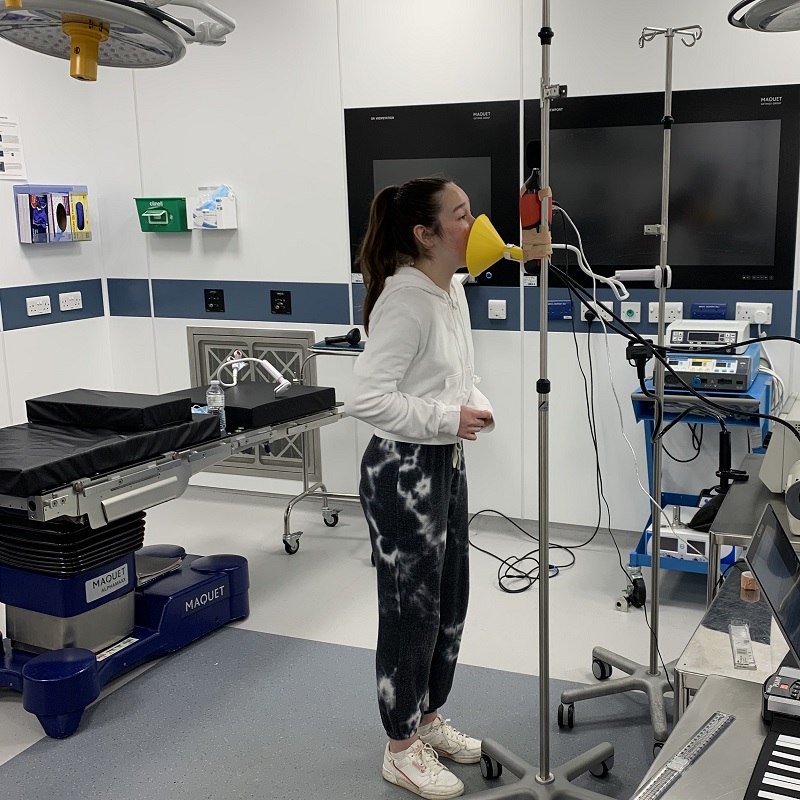Royal Society Open Science has published the first epidemiological study on anxiety and post-traumatic symptomatology in nursing and care home workers following the COVID-19 pandemic.

COVID-19
Together with the containment of COVID-19, the treatment of those infected was (and still is) a major priority. The valiant sacrifice of medical staff in hospitals is well known, with nationwide minutes of applause becoming a familiar scene. However, one important group of healthcare workers has carried on in these difficult times with much less of a spotlight – nursing and care home workers. This group of workers has had to cope, with little or no extra resources, with caring for the most vulnerable to the virus – the elderly. Our Registered Report explores the prevalence of anxiety and post-traumatic symptoms among these unsung heroes.
As the spread of the COVID-19 pandemic began to unfold, Europe turned its attention to Italy, where the aggressive spread of the virus was particularly evident. This increased visibility of the virus was, perhaps, due to a more comprehensive testing programme in Italy compared to other European nations at the time. Of course, we now know that Italy was not a unique case and many of the issues that we describe here, for Italy, are worthy of consideration for other countries too.
Since Italy has the second-largest population of 65+ adults in the world, it was particularly susceptible to the initial onset of the virus, putting much pressure on nursing and care homes (NCH). Younger patients were generally prioritized in hospitals, with older patients often being transferred to NCH. The risk of this policy, and often the tragic consequence of it, was the rapid and deadly spread of the virus in NCH.
This burden was particularly heavy for workers in NCH, who are often very close to residents. To add to this burden, several administrative decisions have had disastrous consequences. For example, there is the scandal of COVID-positive residents in NCH dying and being buried without their families even knowing. In some cases, workers in NCH have been prohibited from communicating any information to those outside and this has now led to commencement of several official investigations.
In short, workers in NCH, who form a very important, though perhaps underappreciated, part of our society, have been forced to work through an extremely challenging period with many tragic consequences. With the end of the “Phase 1” lockdown, we thought it important to assess the mental health of workers in NCH in order to provide them with some suitable support during future developments of the pandemic. The aim of our study here is to provide an initial estimate of how frequent mental health symptoms, of potential clinical interest, are amongst workers in NCH after the first lockdown period.
The spread of COVID-19 in Italy was most severe in the North. Between February and May of 2020, approximately 86% of all COVID-related deaths were based in the North of Italy. For this reason, we decided to focus the attention of our survey on the Northern region.
Upon closing the survey, which took place from mid-June to about the end of July 2020, we had received 1071 full responses. The estimate of the prevalence of moderate-to-severe symptomatology for anxiety and/or post-traumatic stress disorder is 43%, with a 95% confidence interval [37% - 49%]. This number is higher than we originally anticipated (based on a similar study of general healthcare workers in China) and highlights the need for suitable interventions in NCH. Further exploratory analysis of the data suggests that females and those who have had recent contact with COVID-positive persons are the most likely to report moderate-to-severe symptoms.
These are general results which help to highlight those in particular need of intervention. Beginning from these results, more targeted and personal care can be developed in a systematic way. Work to develop such interventions, based on our findings, is now underway. However, it is our hope that our findings will prompt others, perhaps in other countries, to perform similar studies and interventions and, in the end, provide suitable care and support for a group of workers that will care for many of us in our twilight years.
A final note on the registered report format
We believe that the registered report is an excellent means of pursuing research in this area. Compared to more traditional forms of publication, in which the “attractiveness” of the final results can often sway opinion, the registered report offers a rigourous two-stage review process, whose primary focus is on evaluating the methodological, empirical, and theoretical merit of the work. Whatever the final results, the approach taken is sound and is made available in a clear and transparent way in order to aid replication or further development. This approach to research in this field can only be positive.





